Evora earned its UNESCO World Heritage Site designation in 1986. It serves as the capital of the Alentejo region, spanning from the Tagus River in the north to the Algarve in the south.
The region’s picturesque countryside is adorned with cork trees, and it is known for thriving food and wine production.
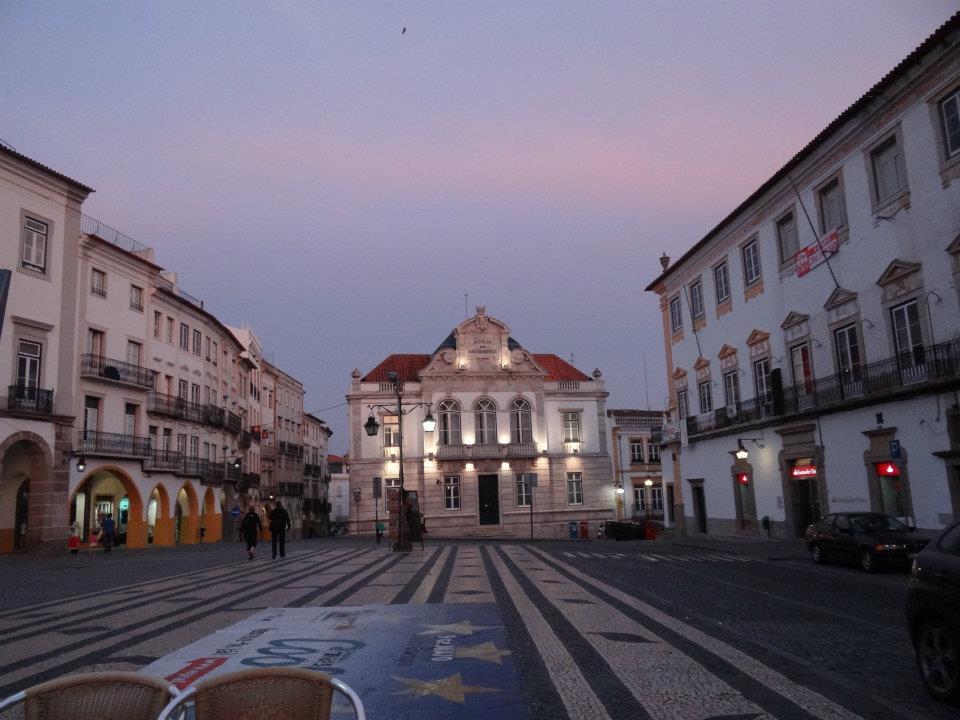
Where is it located?
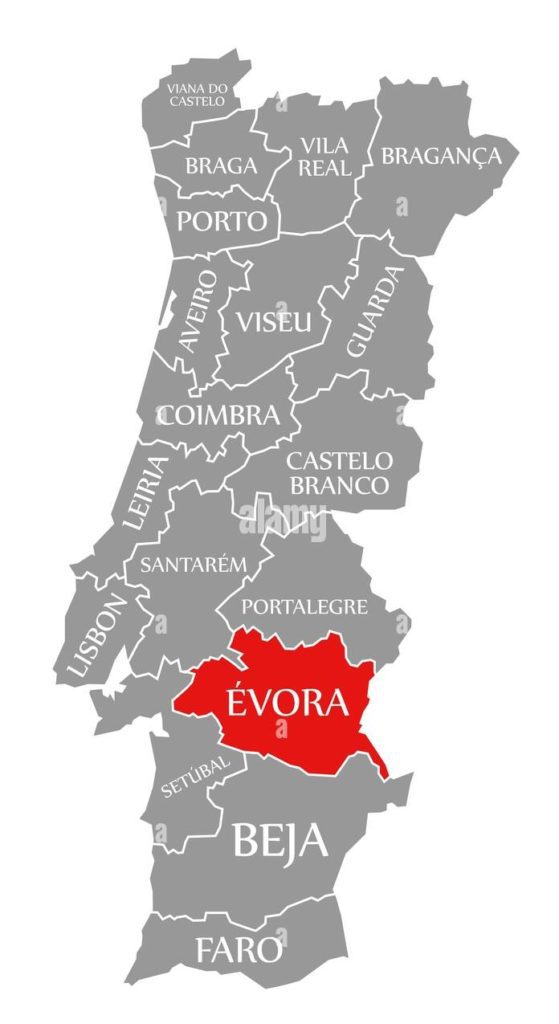
Portugal, situated on the western side of Europe, is often disregarded, adding to its appeal as a hidden gem. While it has its imperfections, like any other country, Portugal offers great conditions that make it an ideal place to live.
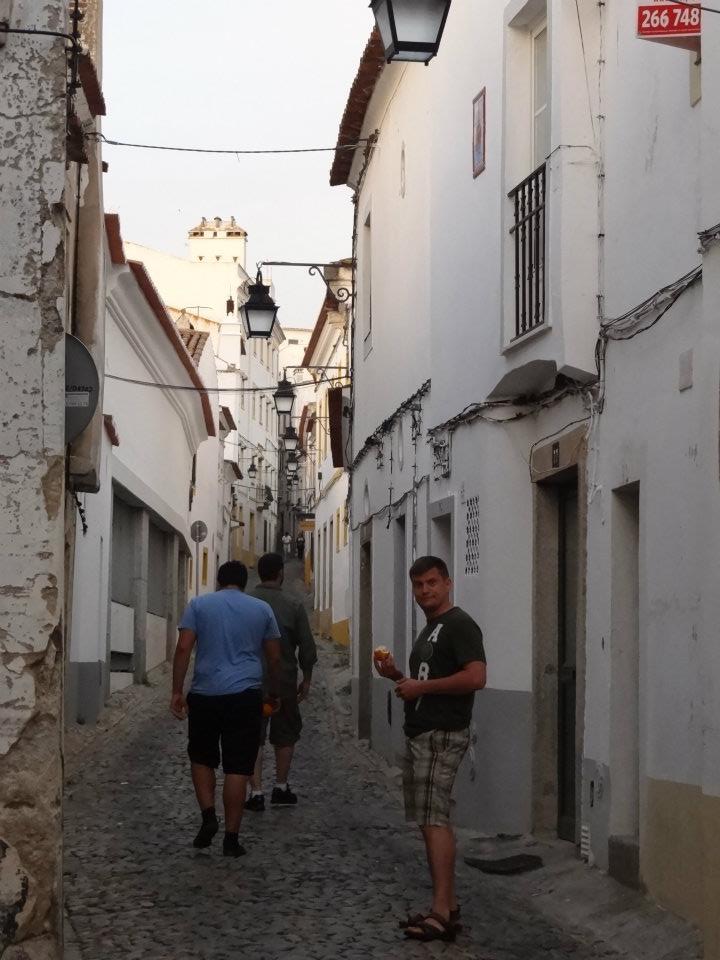
My husband and I always enjoy our trips to Portugal.
Évora is a captivating city located inland in the south and serves as the capital of the Évora district in Alentejo. The city’s meticulously preserved old town, partially surrounded by medieval walls, features a variety of monuments from different historical periods.
Évora is proud to be designated as a UNESCO World Heritage Site.
What are some interesting facts about Évora?
Évora’s historic center is a living testament to the city’s rich past, with a defensive wall that has stood the test of time, dating back to the Roman, Moorish, and subsequent periods.

The Évora Walls, also known as the ‘Cerca Romana’ (Roman Enclosure), showcase impressive defensive military architecture constructed over many centuries.
The ancient wall, which dates back to the 3rd century, is a significant artifact from the Romanization period. It covers an area of about 10 hectares (24.7 acres) and stretches for nearly 2 km (1.25 mi), providing a physical connection to Évora’s distant history.
Whitewashed houses adorned with azulejos (glazed tiles) enhance the area’s unique charm, contributing to its prestigious UNESCO World Heritage site designation in 1986.
Evora is not only historically significant but also a thriving agricultural trade center, specializing in corn (maize), apples, hay, and pigs.

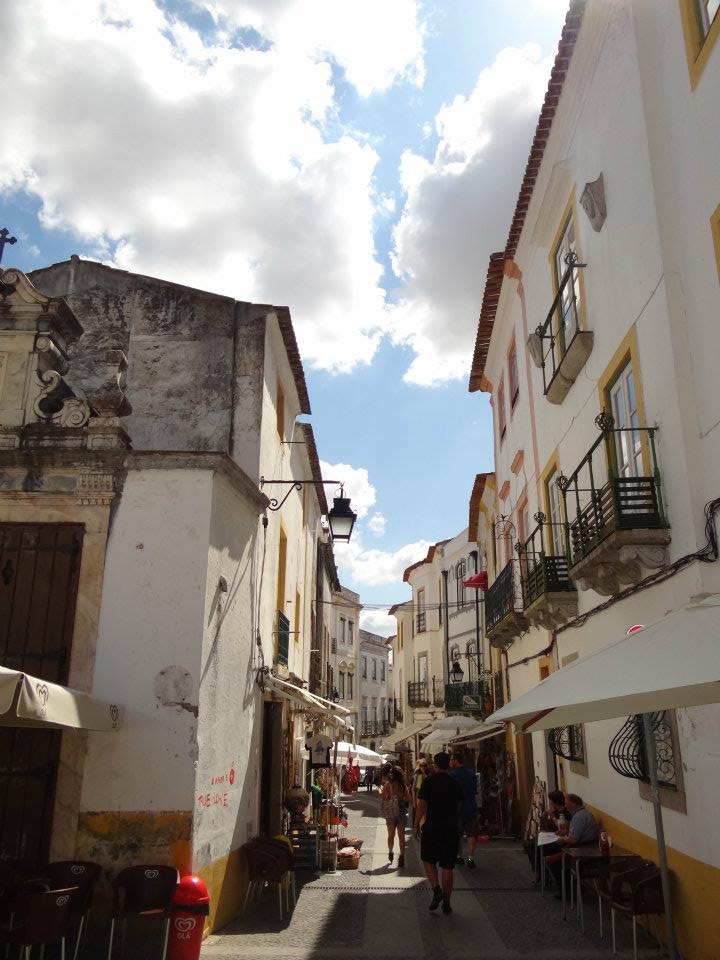
Our Accommodations
While staying in the old town, we found a comfortable place to stay at a reasonable price of 20 Euros per night. The room was clean and equipped with air conditioning. There were orange trees next to our lodging, and we could pick sweet, juicy oranges from them.
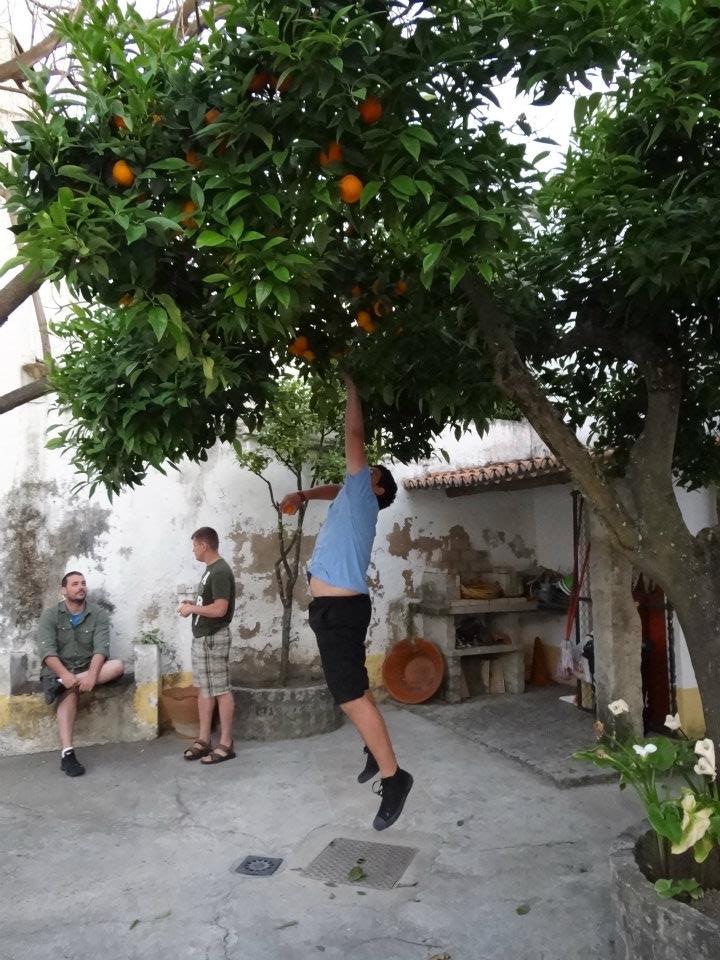

A Capela dos Ossos — Chapel of bones
The Franciscan monks meticulously constructed the Évora chapel in the 17th century, contributing to its rich history. They adorned the walls with around 5,000 preserved remains from medieval graves.
The ceiling is made of white-painted bricks and has themes related to death. The chapel displays two desiccated corpses in glass cases – an adult and a child. There is a poignant inscription on the ceiling that says, “Melior est die mortis die nativitatis,” emphasizing the belief that the day of death is superior to the day of birth.
At the entrance, visitors are greeted with the message: “Nos Ossos que estamos pelos vossos esperamos” (We bones are here. Waiting for yours).
The designers of this unique Bone Chapel took inspiration from the San Bernardino Chapel of Milan, Italy to create an impressive extension of St. Francis Church (Igreja de São Francisco).
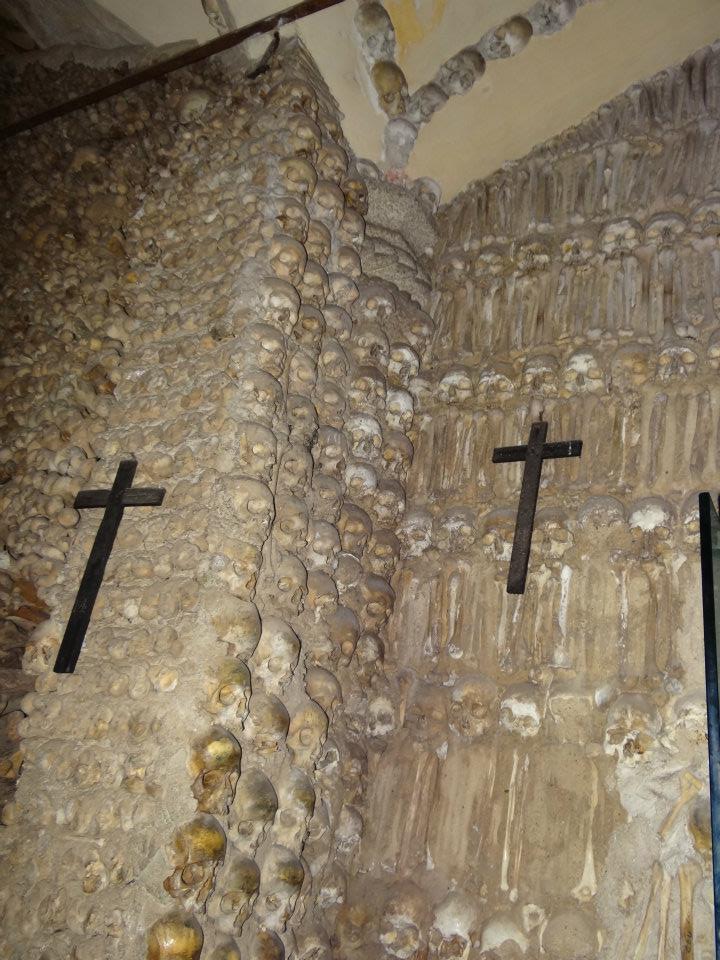
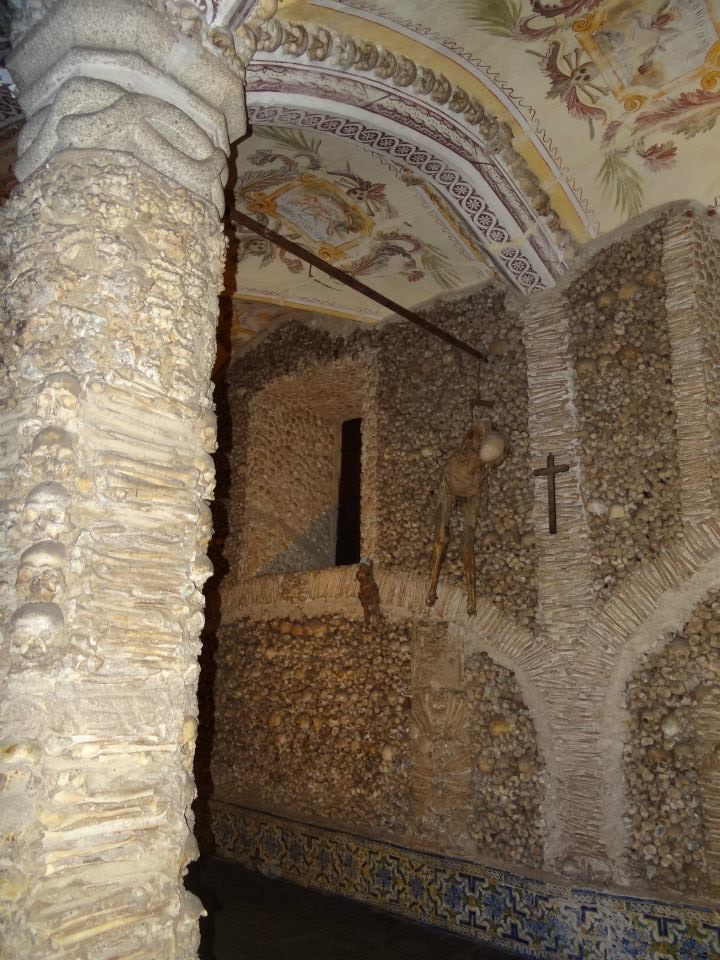
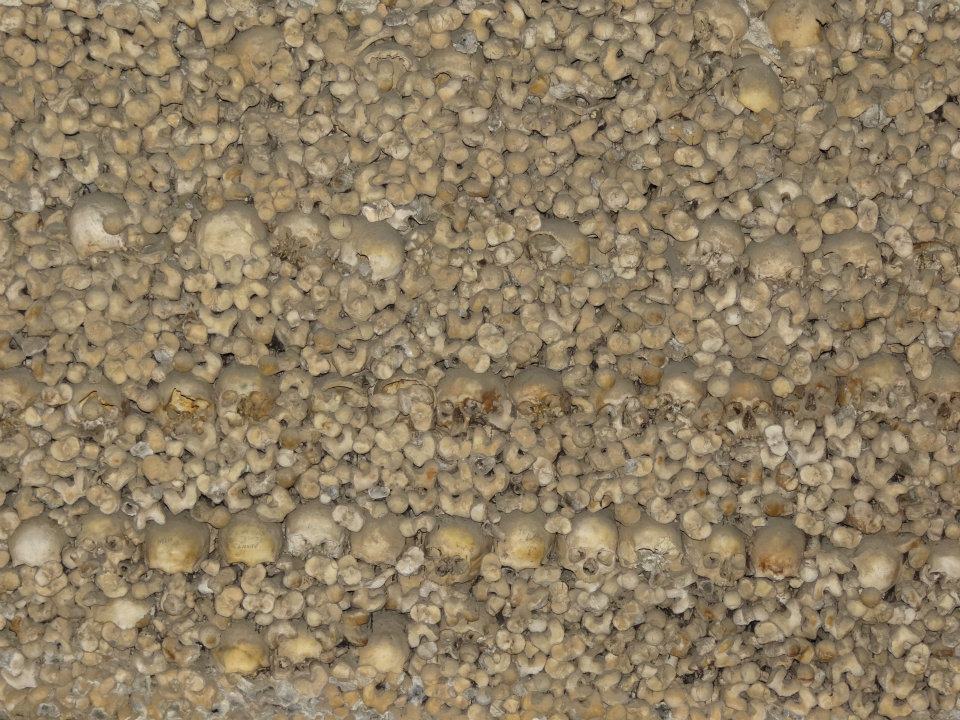
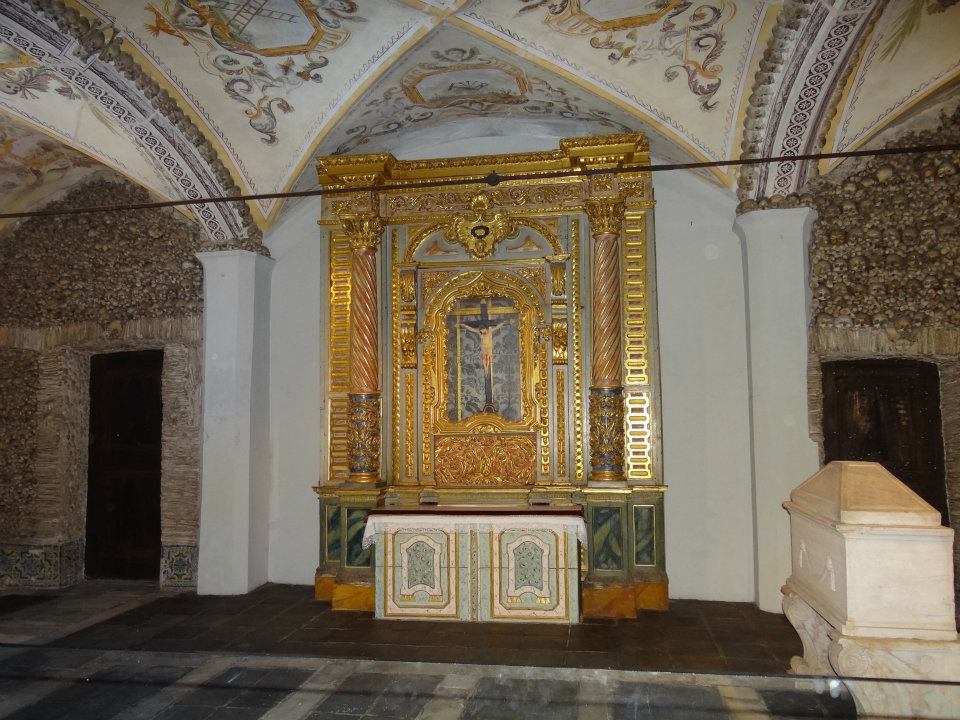
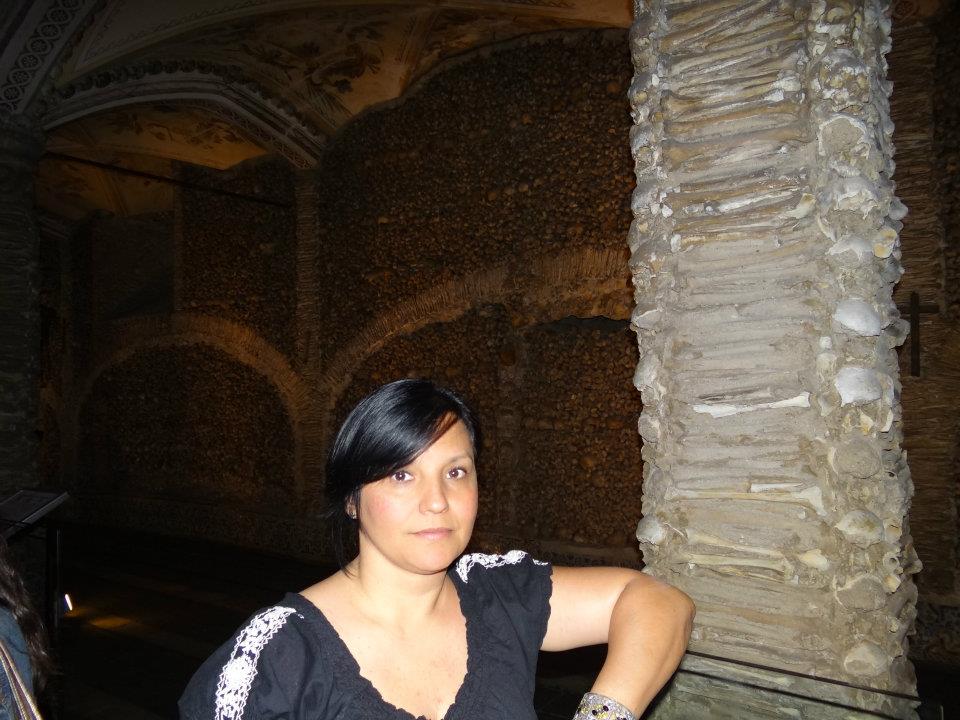
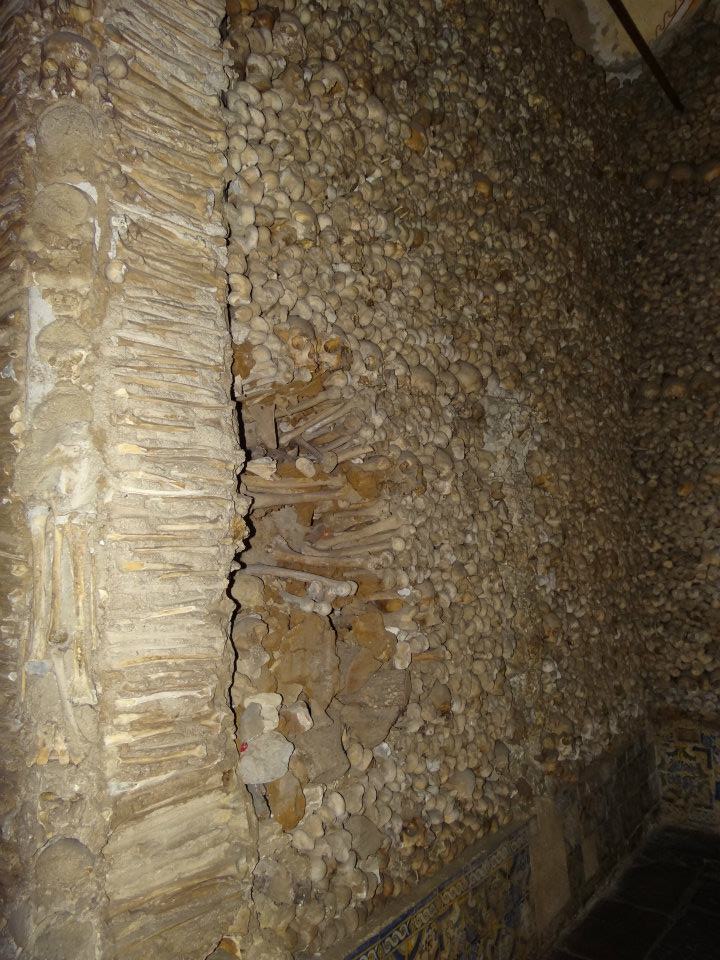
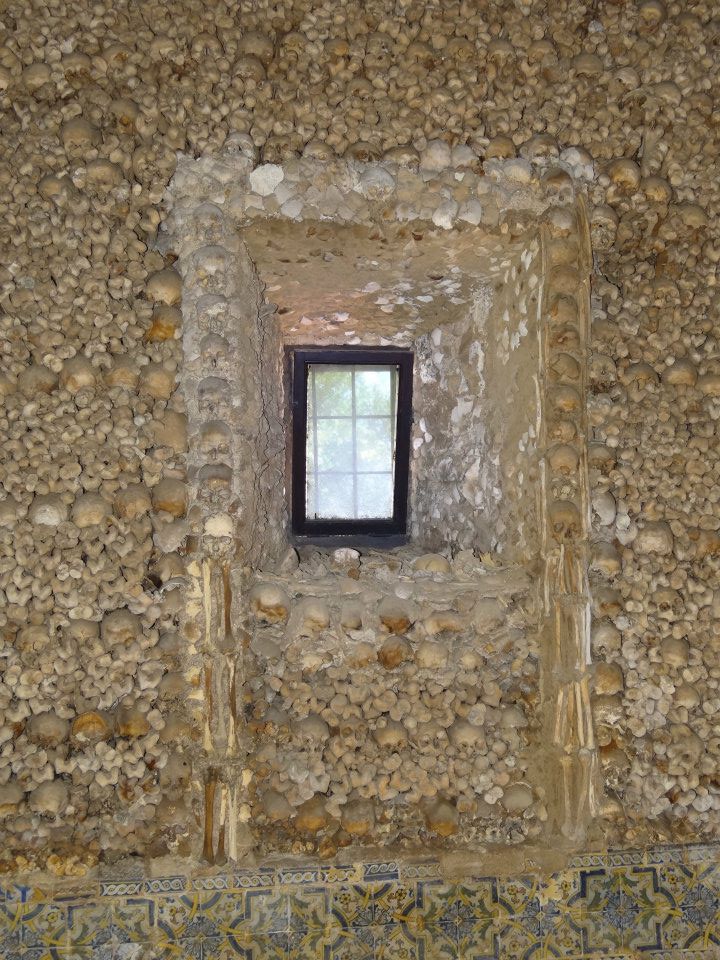

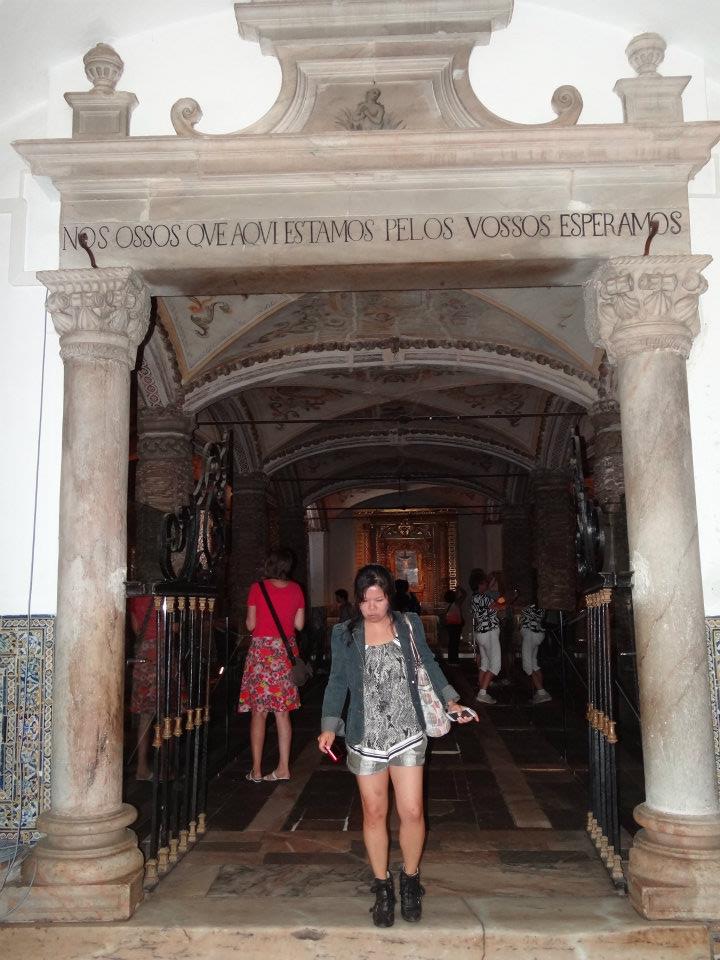
What is the reason for this Chapel?
In Évora, there were numerous cemeteries occupying valuable land. The Franciscans, wanting to respect the buried souls, decided to build a chapel and relocate the bones.
In the late 16th and early 17th centuries, the monks were concerned about societal values. Instead of hiding the bones, they decided to put them on display. Évora was a wealthy city at the time, and the monks believed that the chapel would serve as a place for meditation on the impermanence of material things in the inevitable presence of death.
Admission to the Chapel of Bones and Museum Center is €5.00 for adults and €3.50 for children and seniors.
San Franciscan Church and Monastery
The Chapel of Bones is connected to the San Franciscan Church and monastery. The church was constructed in a Gothic style with some Manueline influences between 1475 and the 1550s.
I couldn’t find much historical information, but it’s known that the church was built by San Franciscans who came to Évora from Galicia in 1224. It has a single nave and beautiful woodwork inside. The main attraction is the Bone Chapel.
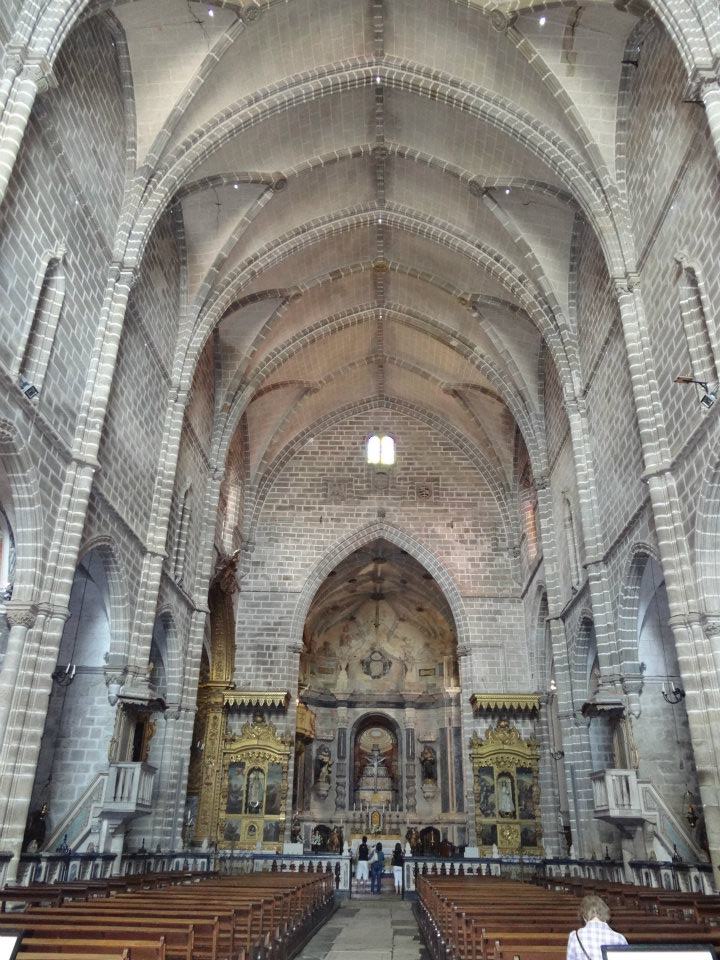
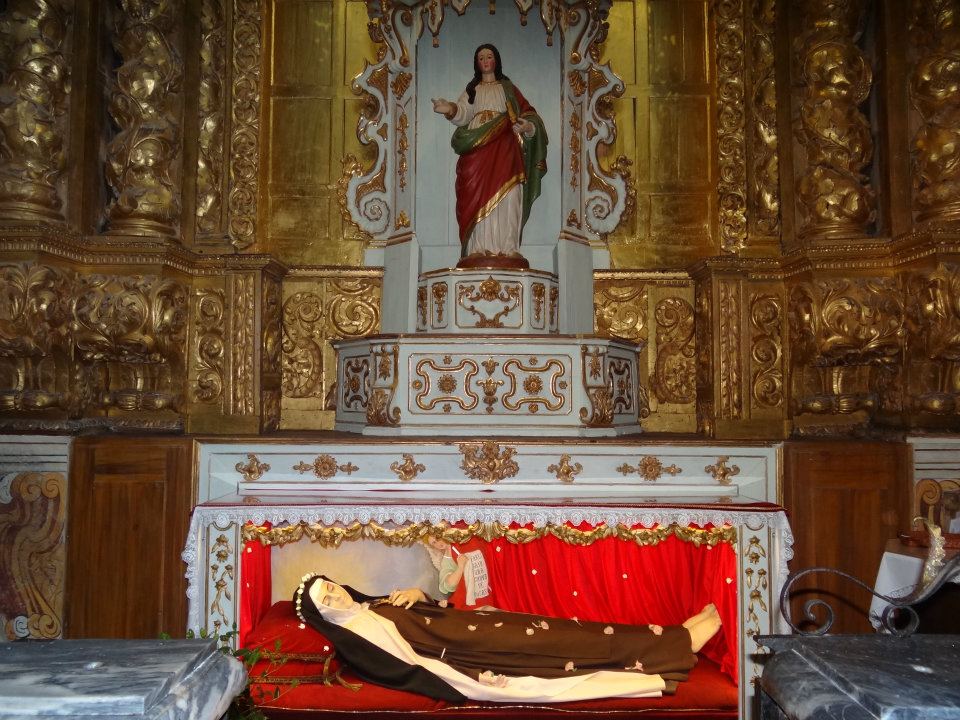

Roman Diana Temple
In Évora, there are numerous monuments and churches. Before concluding, I must mention the Diana Temple, as my husband would be upset if I didn’t.
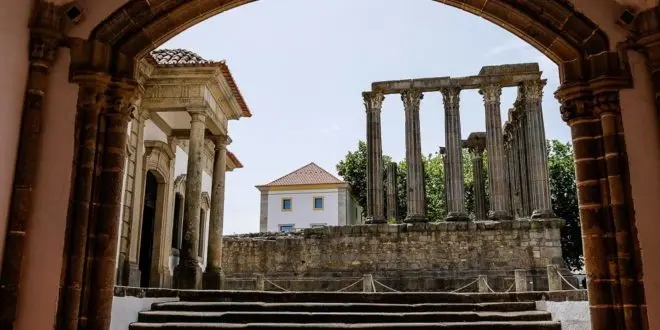
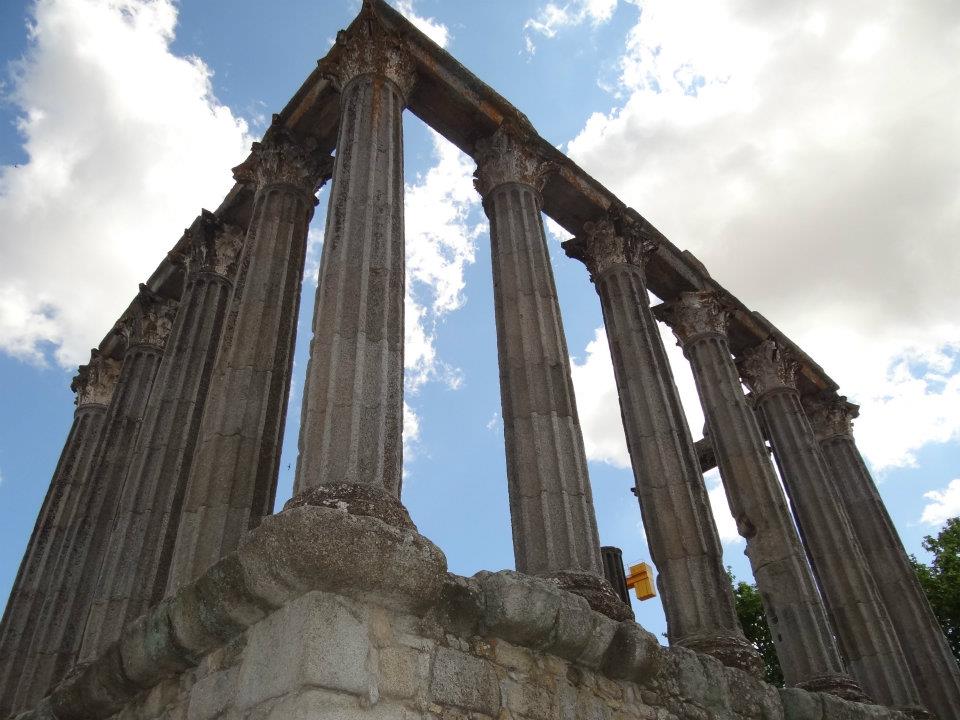
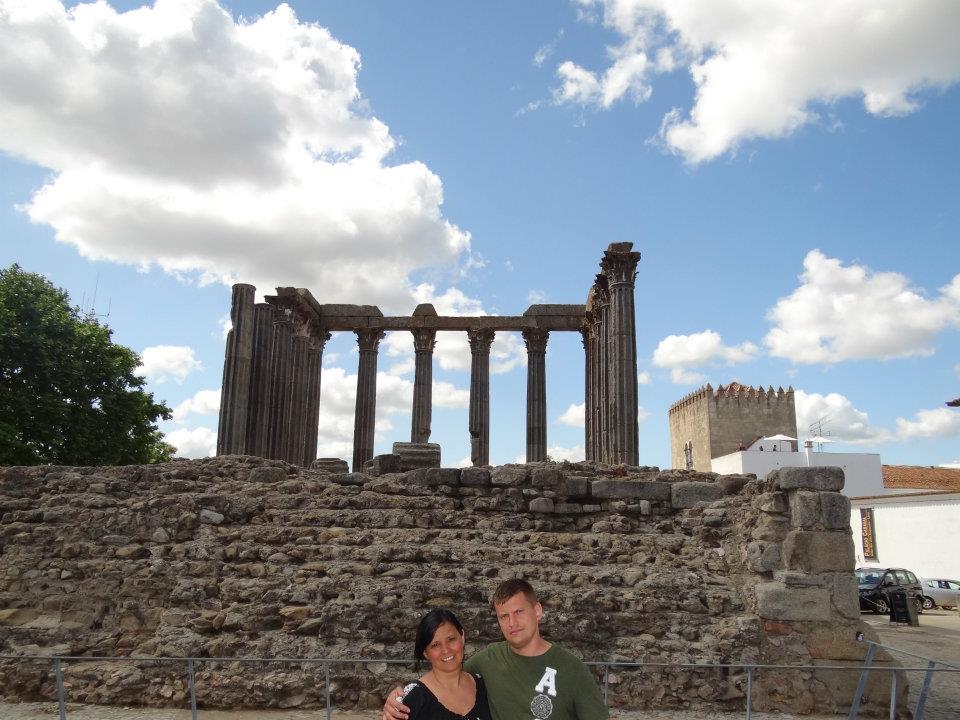
Evora has a rich Roman history and was strategically important to Rome.
The Évora region was abundant in wheat, which was a crucial cereal for Rome. This became pivotal in pacifying the Romans during their Romanization of Lusitania.
Caesar designated Évora as a municipium and named it Ebora Liberalitas Julia (Évora the Liberty of Julius). The Romans held influence over the Iberian Peninsula for centuries, leaving their mark on roads, bridges, buildings, and the Portuguese language.
In the 1st century AD, people constructed the Diana Temple and later modified it during the Barbarian invasions and the Christian period. It was restored to its original state in the 19th century.
The story goes that the temple of Diana was spared from demolition by the Christians, as it functioned as a butcher, with the blood being seen as a symbol of redemption and freedom.
Pretty amazing, don’t you think?

